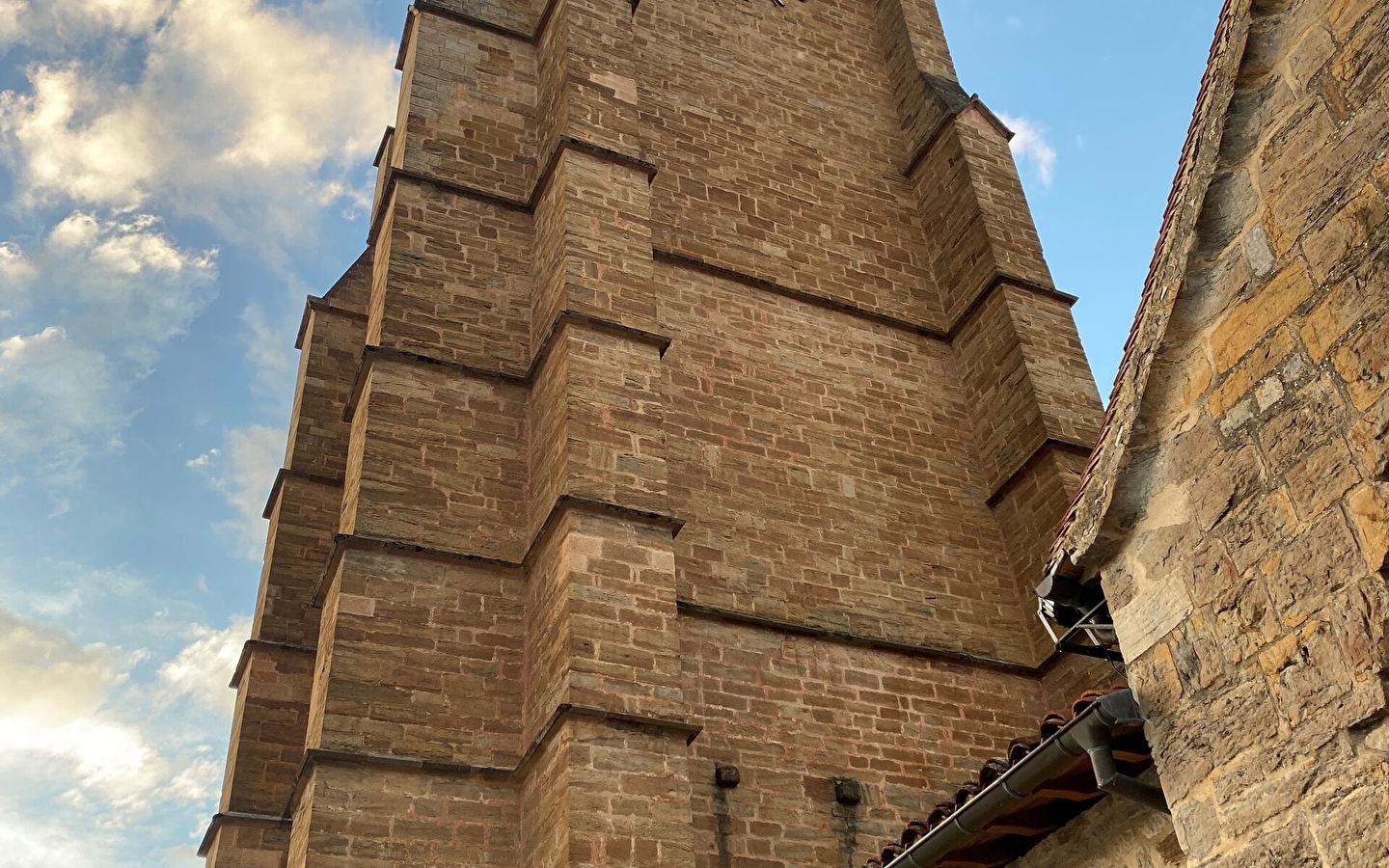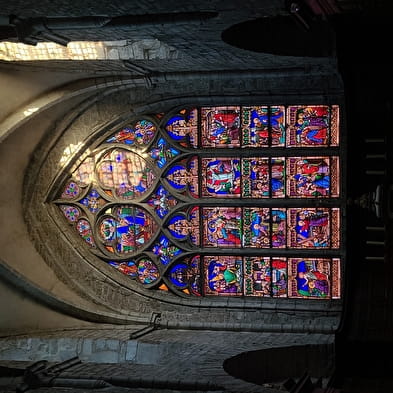
Eglise Saint-Just
The building has been listed as a Historic Monument since 1913. A must-see monument in the town of Arbois, it is also the place where Louis Pasteur came to pray with his family.
A must-see monument in Arbois, the church of Saint Just is historically the town's religious centre. In medieval times, it was a fortified priory under the authority of a prior. From the 11th century onwards, it developed as a dependency of the Benedictine abbey of Saint-Claude in the Haut-Jura.
The church of Saint Just is therefore an abbey and parish church. The building has undergone a number of modifications over the centuries, in particular the bell tower. In 1528, Archduchess Marguerite of Austria wanted to build the highest tower in the Jura. To achieve this, the site of the bell tower was moved. According to a study by archaeologist Gustave Duhem, the bell tower was located in the square of the church's transept. It was originally 20 metres higher. But in 1651, the prior had a firework display set off from the top of the tower. Unfortunately, a fire broke out and the Tower partly collapsed. By the time it was rebuilt in 1715, the tower had lost 20m. It was also used as a watchtower for the fortifications. Its ochre stone is limestone from the Montesserin quarry.
Inside the tower, a bell room houses Noémie-Eugénie, a large bell weighing 4.4 tonnes, cast in Lons-le-Saunier in 1846. And two other bells from the Paccard foundry in Annecy, one weighing 1.6 tonnes: Paule-Clothilde-Marie and the other weighing 800 kg: Félicie-Valentine-Marie-Joséphine. Above these bells is a terrace offering a 360° view of the town of Arbois. The carillon, 11 of whose 20 bells were cast in 1738, is also listed as a Historic Monument.
Several architectural styles overlap. The central nave is typical of the rather sober Burgundian Romanesque style, with unadorned pillars (no capitals). The 13th century marked another important stage in the building process. In particular, the ceiling was replaced with stone vaults instead of wooden frames. This change led to the collapse of the choir, which was rebuilt. A series of chapels was also built in the 14th century to act as buttresses against the thrust of the vaults.
Inside, both 19th-century and contemporary stained glass windows depict saints, the life of Saint Just, the festival of Biou and the stained glass window of the Pelican, the town's emblem, which is accompanied by the town's motto: SIC HIS QUOS DILIGO (thus I make those I love). The stained glass window in the apse dates from the 19th century.
A superb sculpture of a Virgin and Child dating from 1380 is displayed inside the walls of this church: the Virgin and Child with a Flower Stem. It is the work of André Beauneveu, and therefore inspired by Tournais. It is made of limestone.
The preaching chair and organ case were made by the Lamberthod brothers, cabinet-makers from Arbois. They also built several confessionals in the chapels. All these objects date from the 18th century. The Carouge organ also dates from the 18th century. An organ concert festival is held in Arbois every summer.
The church of Saint-Just is the venue for the religious ceremony of the Biou festival on the first Sunday in September.









